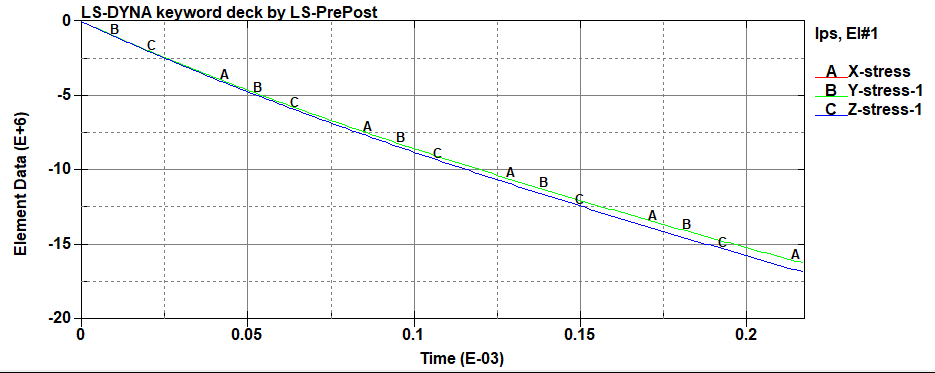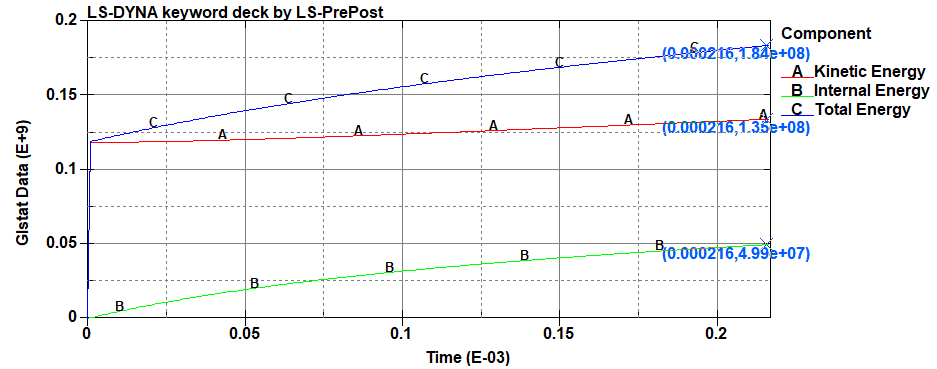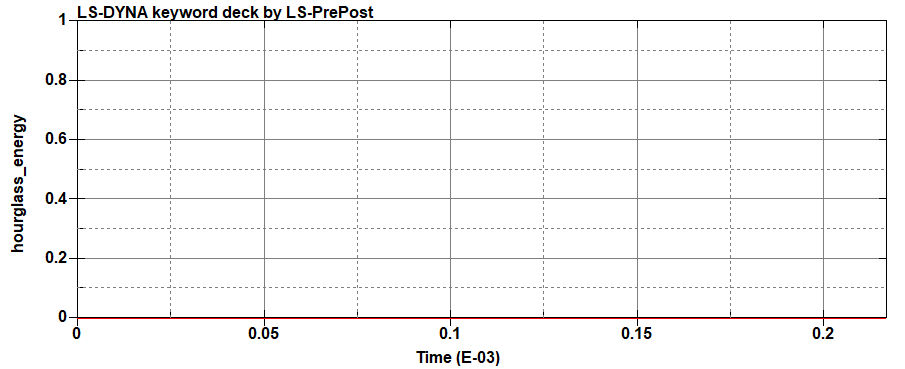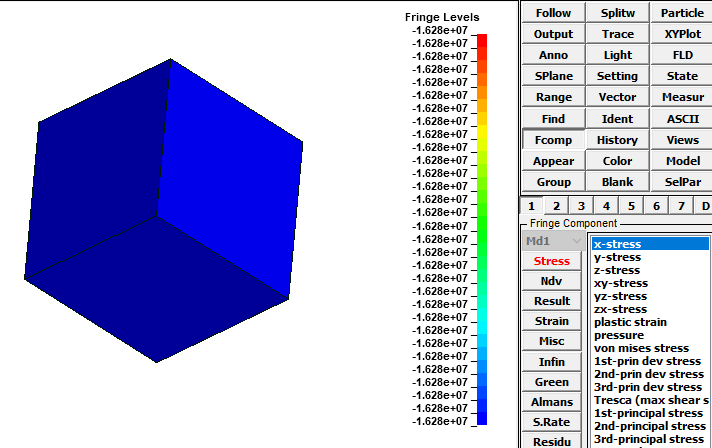-
-
July 5, 2021 at 6:53 pm
longt8
SubscriberHello,
I am doing a 15% uniaxial simple compression at 690/s in Z direction, but the stress in non loading direction in X and Y are not close to zero. And the stress in X, Y and Z are almost same. This is not correct and I do not know where the error comes from?
July 7, 2021 at 2:02 pmSandeep Medikonda
Ansys EmployeeIt's hard to debug this without much information. So, here are a few questions/suggestions:
Write out *DATABASE_ELOUT and look at what is going on at the Integration points.
Look at the energies. See if there is a balance.
Use a smaller TSSFAC such as 0.7 and make sure no mass is being added (DT2MS).
Look at the Hourglass energy being added to the system.
Which specific material model are you using and are you fitting them in LS-DYNA or elsewhere? Does your experimental data have this strain rate data?
Which version of LS-DYNA are you using? Use the latest one and also your LSPP interface is an old one. Please upgrade.
July 7, 2021 at 6:15 pmlongt8
SubscriberHello Sandeep!
Thank you very much for your quick response!
The story is that when I was testing my UMAT code for Yeoh model, I find the result is incorrect with strain rate 690/s and then I tested strain rate 0.15/s which is correct. At this point, I want to test the embedded material in LS DYNA then I found it shows the same phenomenon. This is a uniaxial compression, so the stress in X, Y, Z indicates that the result is not correct. The plots below are using embedded material in LS DYNA.
At the integration point:

The energy is balanced: Kinetic energy + Internal energy = Total energy:

If my TSSFAC is not small enough, the system is not going to stable so I change from 0.7 to 1e-5 which is small enough.
There is no mass added:

 I did not use the hour glass control so the hour glass energy is zero:
I did not use the hour glass control so the hour glass energy is zero:

For this case, I use MAT 077H where I only apply C10 and C20 and it becomes the strain energy form of Yeoh model. I have the experiment data for 690/s/. The experiment involves viscosity, so need to run the elasticity under the real strain rate at first to make sure the result make sense and then add the viscosity in my UMAT later.
I am using version R10.0 now. I have updated to LSPP 4.8.
Thank you very much and looking forward for your future suggestions!
Best Teng
July 14, 2021 at 10:35 pmJim Day
Ansys EmployeeAt the high strain rate, inertial effects may be dominating the response.
July 27, 2021 at 4:02 pmJim Day
Ansys EmployeeIf you're using an under-integrated element formulation, like solid formulation 1 (ELFORM=1), hourglass control is on by default. You have to use *CONTROL_ENERGY to turn on the hourglass energy computation.
If your nodal velocities in the high strain rate case far exceed the sound speed of the material, that would explain the need to reduce the time step scale factor.
At extremely high velocities, solid materials behave more like fluids. It's just physics. See my earlier comment about inertial effects dominating the response.
August 4, 2021 at 1:15 amlongt8
SubscriberHello jday Thank you very much for your reply!
Is there any way to avoid the inertial effect? If the solution has an inertial effect, the uniaxial solution can not be compared with the analytical solution anyway. I try to use the implicit method, but it can not show my viscosity stress from UMAT. In the implicit keyword, I just add *CONTROL_IMPLICIT_GENERAL and *CONTROL_IMPLICIT_AUTO to the explicit dynamics keyfile. Do you think the implicit method can not compute the strain rate effect(viscosity stress) from UMAT?
Best Teng
August 4, 2021 at 4:07 pmJim Day
Ansys EmployeeIf there is mass and there is acceleration, there is an inertial effect.
If you want to run an implicit dynamic simulation, as opposed to an implicit static simulation, include *CONTROL_IMPLICIT_DYNAMICS.
Viewing 6 reply threads- The topic ‘LS0DYNA High Strain Rate issue using Yeoh Model’ is closed to new replies.
Innovation SpaceTrending discussionsTop Contributors-
4597
-
1505
-
1386
-
1209
-
1021
Top Rated Tags© 2025 Copyright ANSYS, Inc. All rights reserved.
Ansys does not support the usage of unauthorized Ansys software. Please visit www.ansys.com to obtain an official distribution.
-
The Ansys Learning Forum is a public forum. You are prohibited from providing (i) information that is confidential to You, your employer, or any third party, (ii) Personal Data or individually identifiable health information, (iii) any information that is U.S. Government Classified, Controlled Unclassified Information, International Traffic in Arms Regulators (ITAR) or Export Administration Regulators (EAR) controlled or otherwise have been determined by the United States Government or by a foreign government to require protection against unauthorized disclosure for reasons of national security, or (iv) topics or information restricted by the People's Republic of China data protection and privacy laws.












